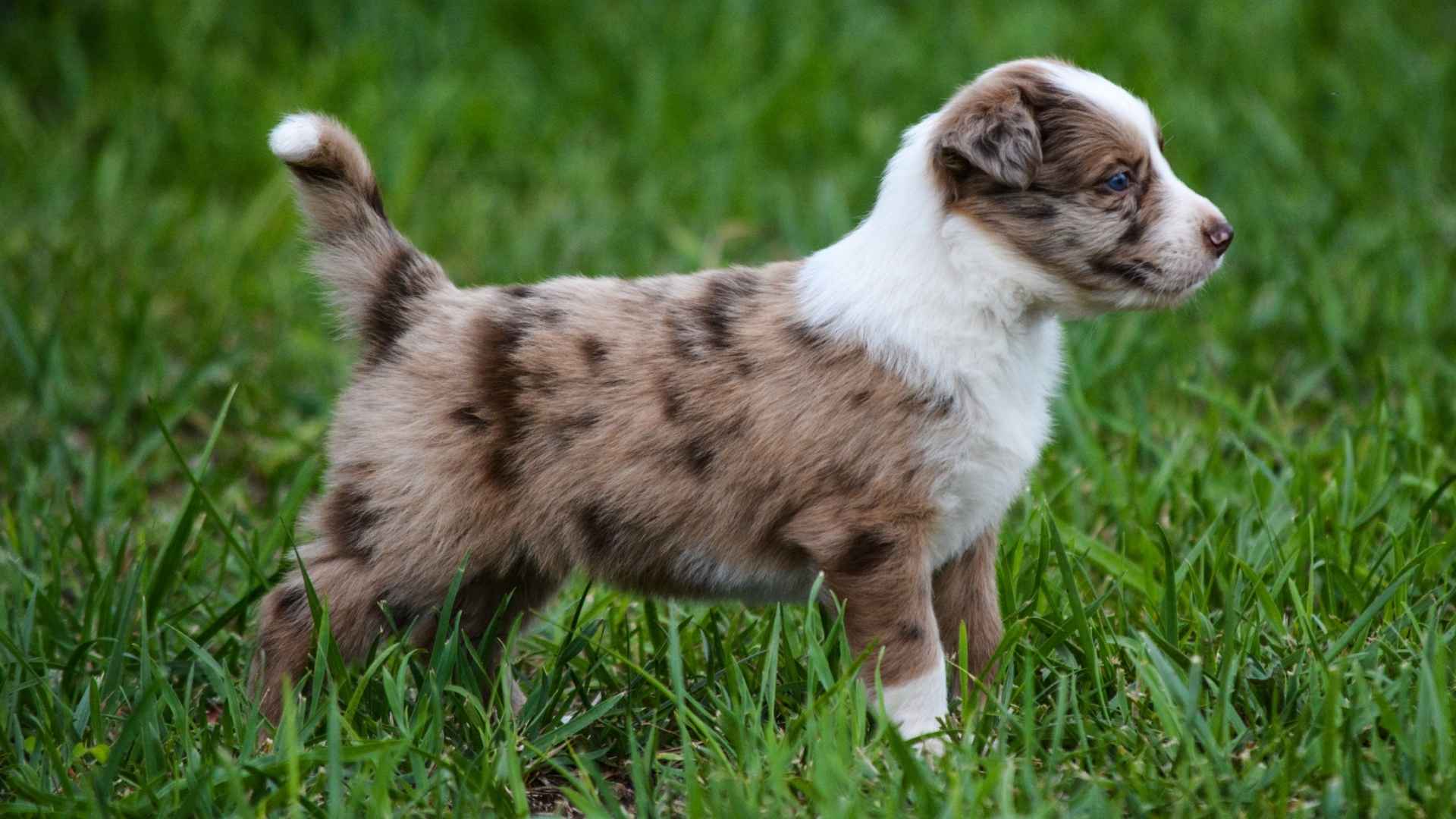Merle in dogs is one of those coat patterns that instantly turns heads—and for good reason! Known for its beautiful marbled effect, the cryptic merle pattern creates irregular patches of color that almost look painted onto a lighter background. While blue merle and red merle are fairly well-known, there’s one variation that’s especially eye-catching: chocolate merle.
This stunning pattern features rich brown blotches over a tan or beige base, creating a soft, dreamy look that’s hard to resist. Sometimes called “dapple,” merle coats can also come with other unique features like blue or partially blue eyes, adding to their one-of-a-kind charm. But did you know not all breeds can sport this rare coat?
In this blog, we’ll explore the dog breeds having chocolate merle patterns, dive into what makes this coloring so special, and help you discover which breeds wear it best. Get ready to meet some truly show-stopping pups!
Dog Breeds With Chocolate Merle Patterns
1. Australian Shepherd
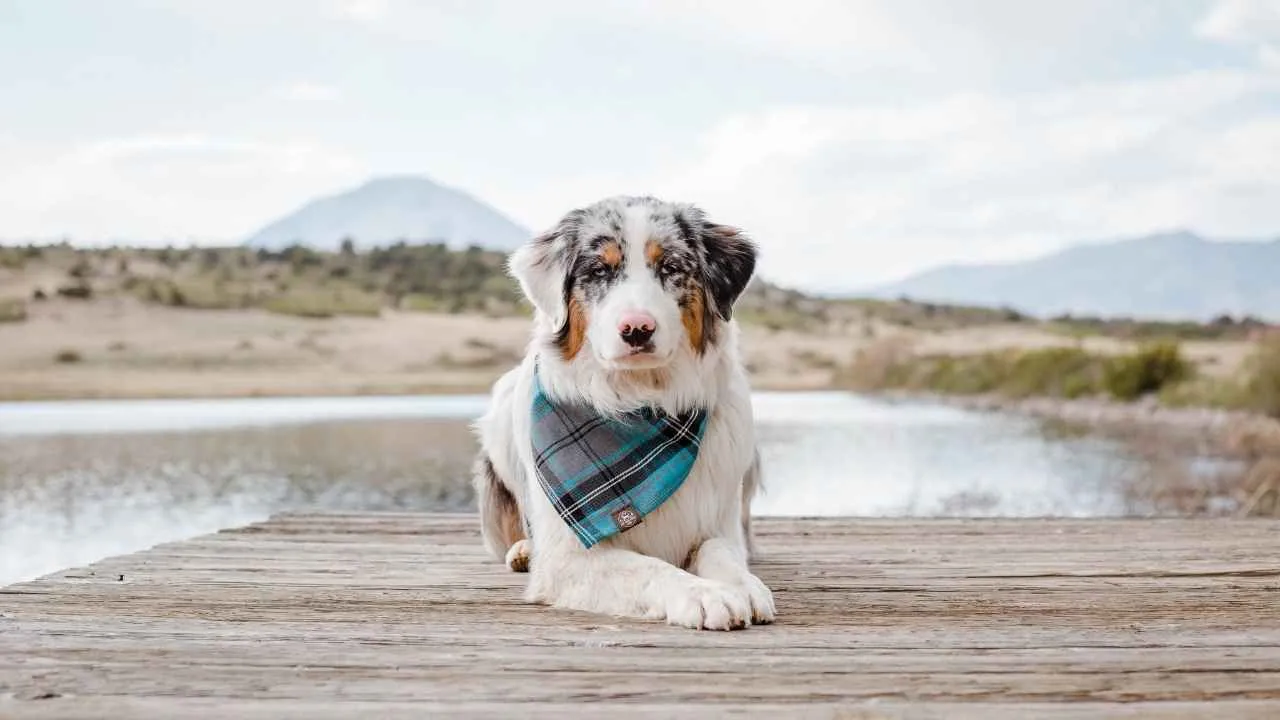
Australian Shepherds are one of the most well-known breeds associated with the merle gene, often flaunting striking blue eyes and beautiful coat patterns. While blue and red merles are the most common, some Aussies also carry the rare chocolate merle pattern, adding a rich twist to their already eye-catching appearance.
Most Australian Shepherds are tri-colored, with tan points on the cheeks, legs, and eyebrows—details that remain unaffected by the merle gene. Bi-colored merles exist but are far less common.
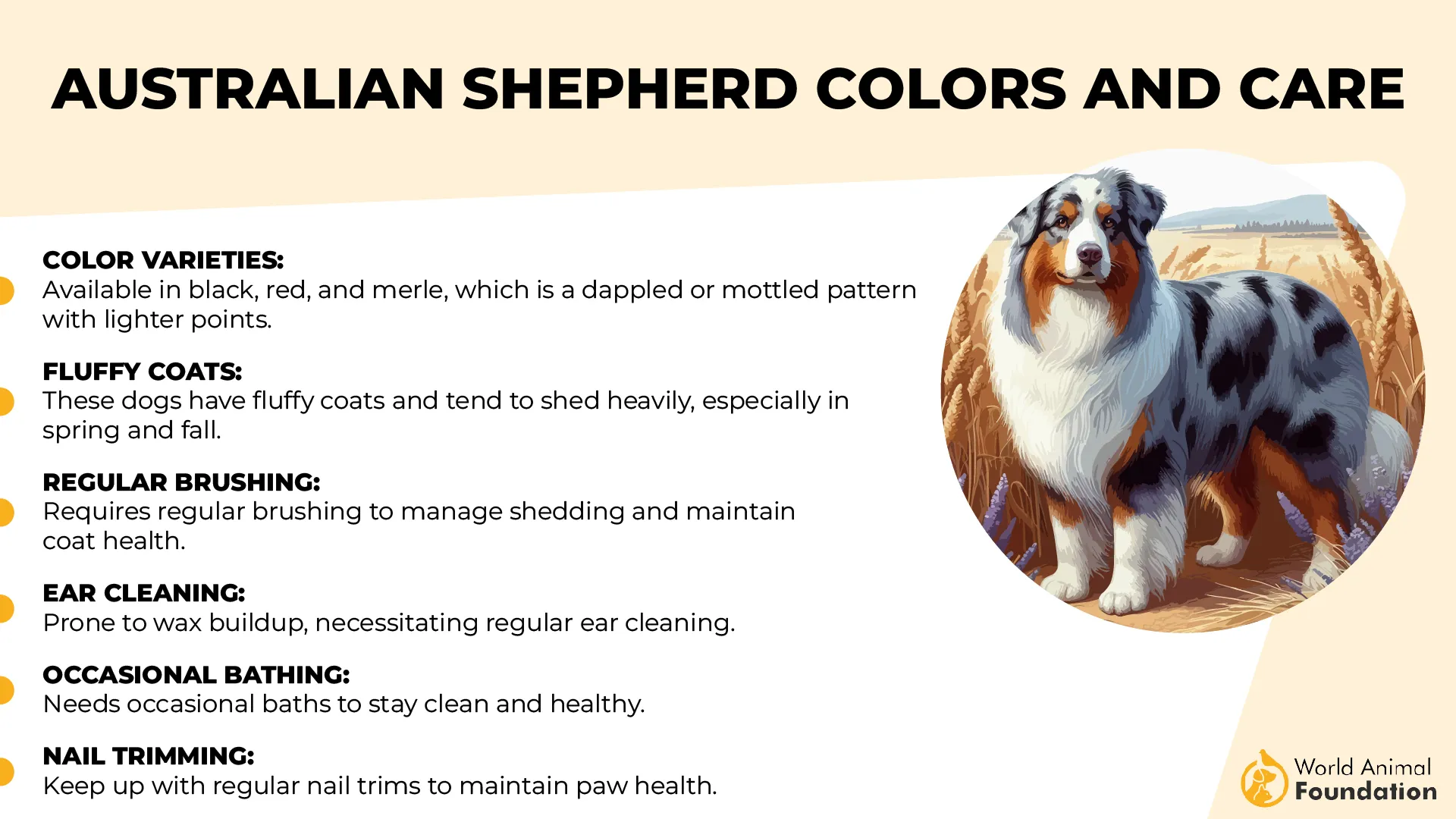
The merle pattern in Aussies has been documented since the early 20th century, with around 40% of the breed showing merle coloring today. Responsible breeders typically pair a merle with a non-merle dog to avoid genetic health issues.
Breeding two merles can lead to serious problems like deafness, blindness, or both, especially in puppies born with mostly white coats and pale blue eyes. Other health concerns include epilepsy and hip dysplasia, though not every dog is affected.
Beyond their beauty, Australian Shepherds are intelligent, high-energy working dogs with strong herding instincts. They’re loyal, friendly, and quick learners, but not ideal for low-activity households.
They need daily physical and mental stimulation to stay happy and well-behaved. From red tri-colored coats with golden-brown eyes to rare golden or chocolate shades, there’s no denying the Australian Shepherd’s irresistible charm and versatility.
2. Border Collie
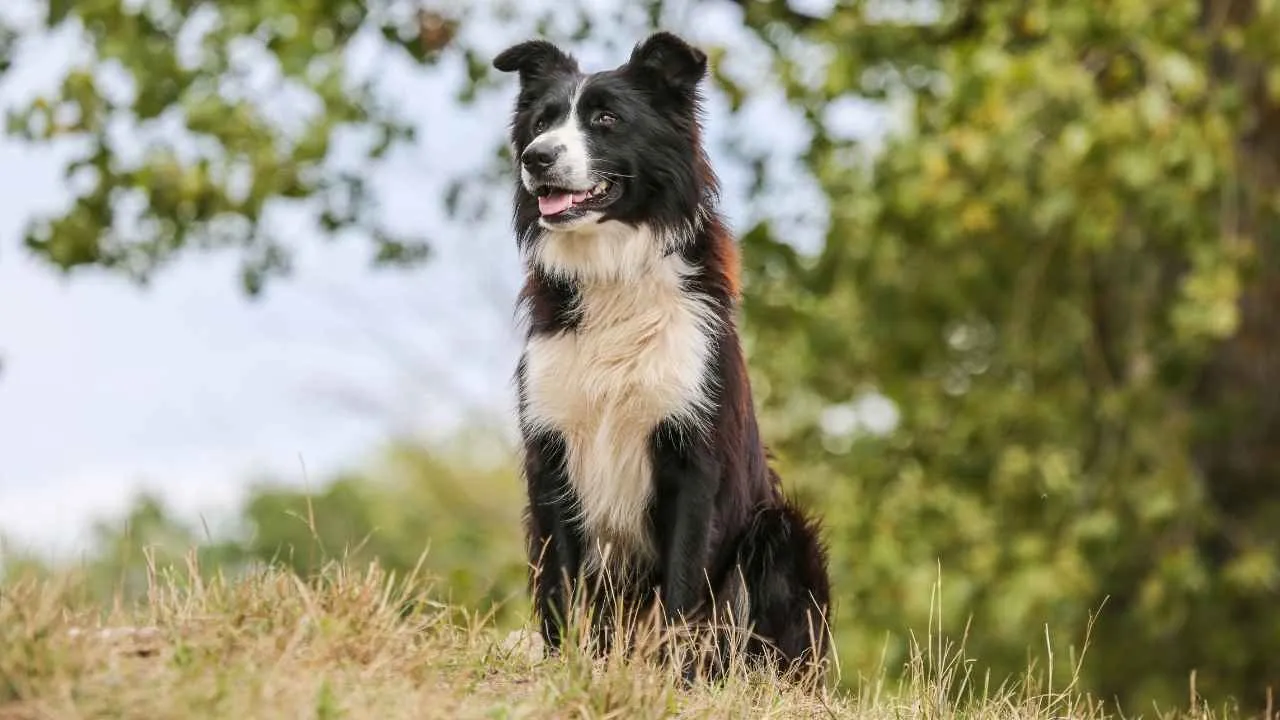
Many people assume Border Collies only come in classic black and white, but this brilliant working breed actually sports a wide range of colors—including red and white, lilac merle, and rare merle variations with tan points.
While black and white remains the most common due to selective breeding, the breed’s color diversity is broader than most realize. Among the rarest are merle Border Collies, whose coats display a striking marbled color pattern caused by the merle gene on chromosome CFA 10.
This gene dilutes the base color—black or red—creating the distinctive “blue merle” or “red merle” effect. It can also result in light or blue eyes and paler pigmentation on the nose and paw pads.
The merle pattern only affects the pigmented areas of the coat, not the white markings—often confused with heavy ticking or mottling, which are separate patterns. Merle Border Collies can have either smooth or rough coats and are as intelligent as they are eye-catching.
Red and white Border Collies have become increasingly popular, though the red gene is recessive and requires both parents to carry it, making it less common than black. No matter the color, Border Collies remain celebrated for their brilliance, agility, and for being amazing herding dogs.
3. Catahoula Leopard Dog
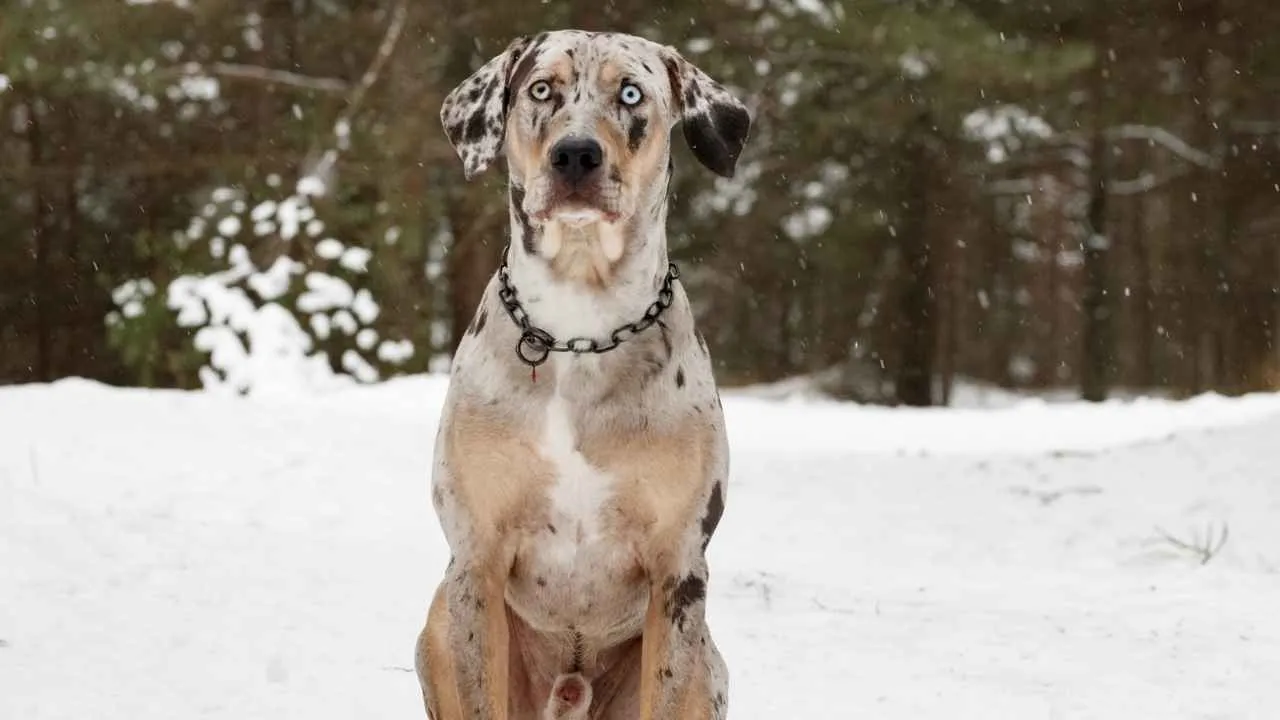
The Catahoula Leopard Dog, also called the Catahoula Cur or Hog Dog, is a striking herding breed from the U.S. known for its vibrant coat patterns and serious work ethic. With their short, smooth coats and mesmerizing blue or heterochromatic eyes, these dogs are true standouts.
Their most iconic look is the leopard-like merle pattern, which features a blend of spots and patches in colors like red, chocolate, black, and even blue.
Catahoulas are as hardworking as they are beautiful. Originally bred for farm work and hog hunting, they thrive with active families who can provide structure, consistent training, and plenty of exercise. They’re intelligent, driven, and do best when given a job to do—whether it’s herding, agility, or obedience competitions.
Their coats can vary from solid to merle, brindle, or a mix, often accented with tan markings or white trim. Beyond aesthetics, the merle pattern may even help protect them from sun exposure during long hours outdoors.
While they shed moderately year-round, weekly brushing is enough to keep their coat healthy and clean. Though still rare in the UK, Catahoulas are beloved for both their unique looks and their loyal, energetic nature.
4. Cardigan Welsh Corgi
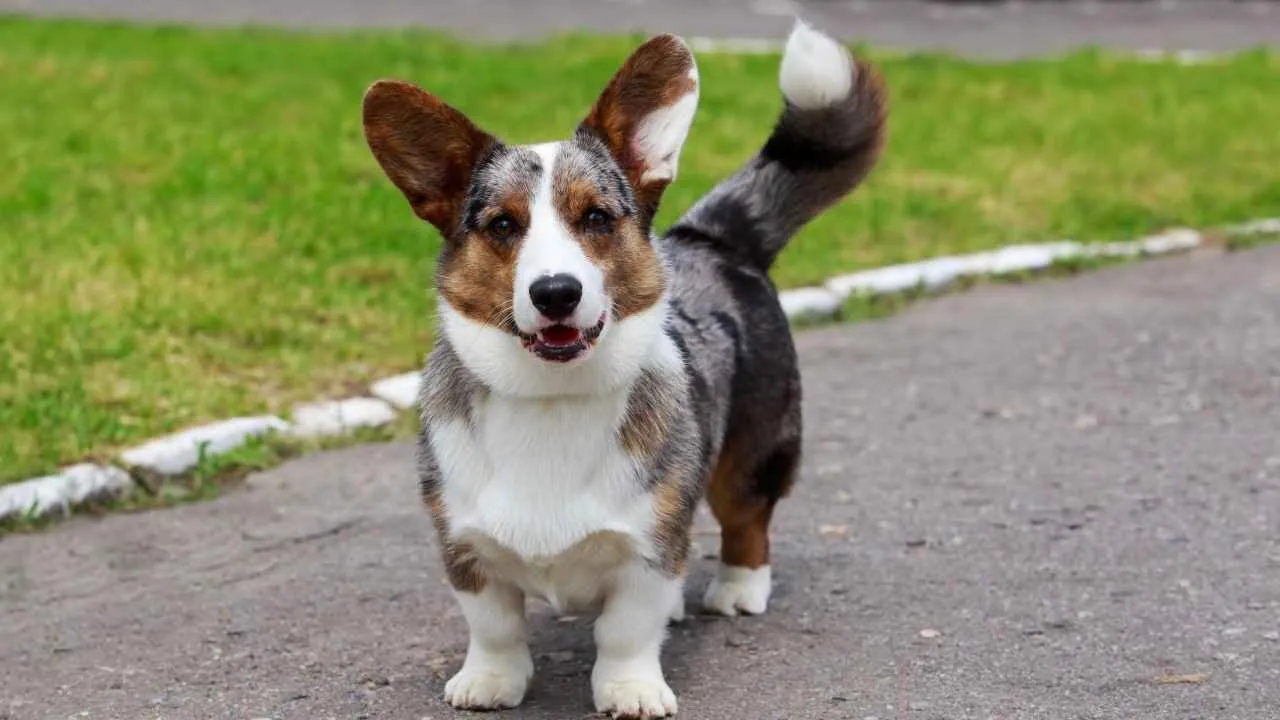
Cardigan Welsh Corgis are charming little dogs with big personalities. Known for their short legs, large ears, and signature fluffy tail, these herding dogs are among the oldest dog breeds, dating back thousands of years. They’re smart, eager to please, and respond well to training, making them fantastic companions for active families or individuals.
Despite their small stature, Cardigans are energetic and alert. Their name likely comes from the Celtic words cor (dwarf) and gi (dog), and their compact, sturdy frame lives up to the “dwarf dog” description, states WebMD.
Measuring about 40 inches from nose to tail, they may be small, but certainly aren’t lacking in spirit. They tend to be affectionate with their families, loyal, and protective, but a little wary around strangers. Their sense of humor and intelligence add to their endearing personality.
Cardigans have a medium-length double coat and are known for their striking colors, ranging from red, sable, black, and brindle to the stunning blue merle. White markings are common on the neck, chest, legs, muzzle, and tip of the tail, though white should never dominate the face or surround the eyes.
In blue merles, blue or partially blue eyes are allowed, while in other colors, they’re considered a disqualification under breed standards.
These dogs love activity and need regular physical and mental stimulation to stay happy. Daily walks and playtime are essential, especially since Cardigans can become mischievous if bored.
5. Miniature American Shepherd
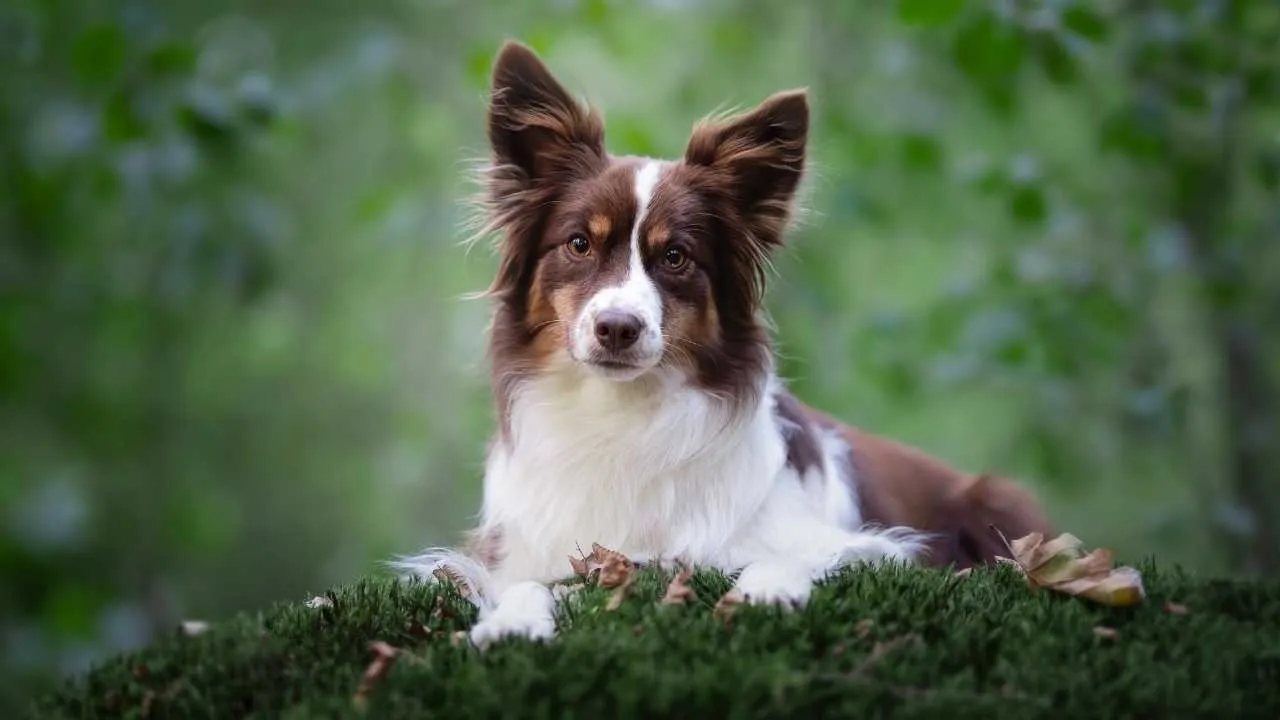
Once considered just “small Aussies,” Miniature Australian Shepherds—now officially recognized as Miniature American Shepherds—have carved out a name for themselves.
These pint-sized pups are adored for their intelligence, agility, and loyal companionship, making them a favorite among active families and dog sport enthusiasts alike.
Mini Aussies may be small, but they’re full of energy and talent. They shine in activities like agility, rally, barn hunts, and disc dog competitions. Despite their size, they’re anything but lap dogs—these athletic pups need both physical exercise and mental stimulation to stay happy, states AKC.
Their coat colors are just as stunning as their larger relatives, ranging from black and tan to red and tan, with merle versions being especially popular. The merle pattern creates a marbled mix of darker and lighter shades, and no two coats are alike.
Eye color is just as striking—Mini Aussies can have blue, brown, amber, hazel, or even multi-colored eyes with flecks.
Although many people seek out merle-colored puppies, it’s important to remember that only about half of any litter will carry the merle pattern. Solid-colored Mini Aussies are just as intelligent and affectionate, even if their coat isn’t as flashy.
With their sharp minds and eagerness to please, Miniature American Shepherds thrive on learning and love being part of the action. Whether it’s hiking, scent work, or simply a game of fetch, these dogs are happiest when they’re doing life right alongside their humans.
6. Dachshund
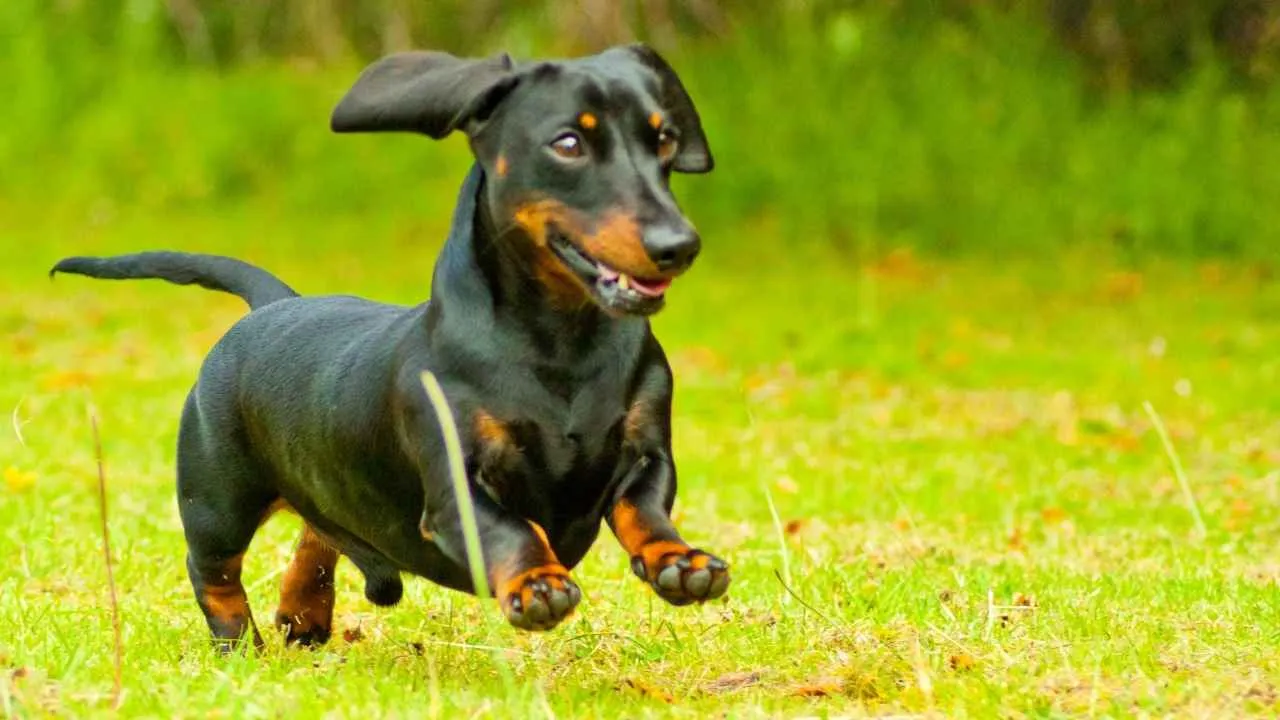
Affectionately known as the “sausage dog,” the Dachshund is a beloved German breed that’s captured hearts worldwide, especially in the U.S. Beyond their unique shape, these dogs are bold, clever, and make excellent watchdogs thanks to their alert disposition.
Among their many coat variations, the “dapple” stands out. This pattern, the Dachshund’s version of the merle gene, appears in all three coat types: smooth, long-haired, and wire-haired. Dapple Dachshunds are recognized by the AKC, with evenly distributed spots being especially prized in show rings.
One striking trait of dappled individuals is their potential for multicolored eyes—or even two colors in one eye, though it’s purely cosmetic.
Chocolate Dachshunds are also highly sought after for their rich brown coats, which may be solid or accented with tan or cream markings—typically seen above the eyes, on the chest, or on the paws. While chocolate-and-tan or chocolate-and-cream coats are AKC-approved, a solid chocolate coat is non-standard but still adored by fans.
The chocolate color stems from the recessive “bb” gene pairing. If a dominant black gene is inherited from either parent, the chocolate shade won’t appear, making it relatively rare. When combined with the dapple pattern, the result is a striking coat with chocolate patches on a lighter background, sometimes complemented by tan or cream accents.
Chocolate Dachshunds come in all coat types: smooth-coated with sleek fur, long-haired with flowing locks that require regular grooming, and wire-haired with a rugged, coarse texture.
Despite their size, they’re spirited and playful and retain a strong prey drive from their hunting origins. With proper care and engagement, they make lively and devoted companions.
7. Great Dane
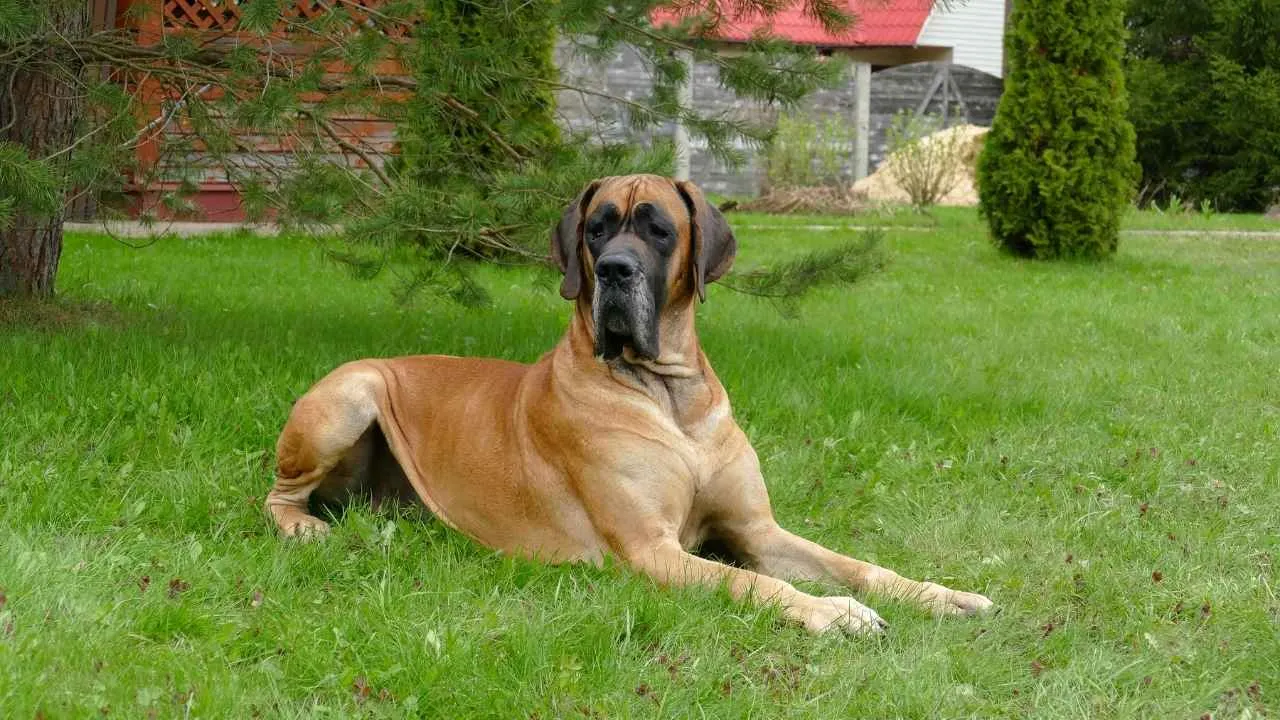
The Great Dane is one of the tallest dog breeds but is known for their gentle, affectionate temperament. Nicknamed the “Apollo of dogs,” this giant carries itself with grace and has a heart just as big. Though originally bred for boar hunting, today’s Great Danes are loyal family companions, cherished for their calm demeanor and unwavering devotion.
While most people recognize Great Danes in classic fawn or harlequin coats, the merle variation is gaining attention, especially since it was officially recognized by the American Kennel Club in 2019.
Merle Great Danes can come in several shades, including solid merle, blue merle, brindle merle, and even mantle or chocolate merle. These dogs often display a beautiful marbled coat with little to no white, particularly across the head, chest, and paws.
Interestingly, a merle puppy doesn’t always require two merle parents—breeding two harlequin Great Danes can also result in merle-patterned puppies. However, it’s crucial not to breed two merle-colored dogs together, as “double merles” often suffer from serious health complications. When choosing a pup, always prioritize health-tested parents over coat color.
Health is a key concern with Great Danes due to their large size and merle genetics, states the AKC. While merle Danes were once avoided over health myths, it’s now understood that the real risk lies in double-merle pairings, not the merle gene itself.
Double Merle Great Danes will be most often all white or close to it. They have lighter pigmentation, making them more vulnerable to sunburn and skin cancer. To protect them, limit sun exposure during peak UV hours and provide shaded outdoor areas when they’re outside.
Despite their origins as hunters, modern Great Danes—merles included—are gentle giants. Behind their imposing look is a calm, affectionate nature. With proper training, they make loyal, loving companions that stand out for more than just their striking appearance.
Conclusion
In the world of dog breeds, the chocolate merle pattern stands out for its striking blend of mottled patches and dark splotches against rich brown tones. From the merle Australian Shepherd to the merle French Bulldog and merle Chihuahuas, these merle-patterned dogs have captivated the hearts of many.
However, behind their beauty lies a responsibility: breeding two merle dog breeds can result in double merle puppies, which often face serious health issues.
Dog breeders and first-time dog owners alike must understand the risks and embrace responsible breeding practices. Whether you’re drawn to the playful merle corgis, elegant merle poodles, or rare sable merle varieties, selecting a healthy, well-bred companion is essential.
While merle dog temperament is often intelligent and affectionate, especially in companion dogs like the toy poodle or smooth collie, proper socialization and training are key.
Ultimately, merle dogs—from rough collies to Pyrenean shepherds—can thrive when raised with care. By avoiding double merle dogs and being mindful of the merle allele, we can enjoy the beauty of merle coat patterns while ensuring the well-being of every pup in the litter.


